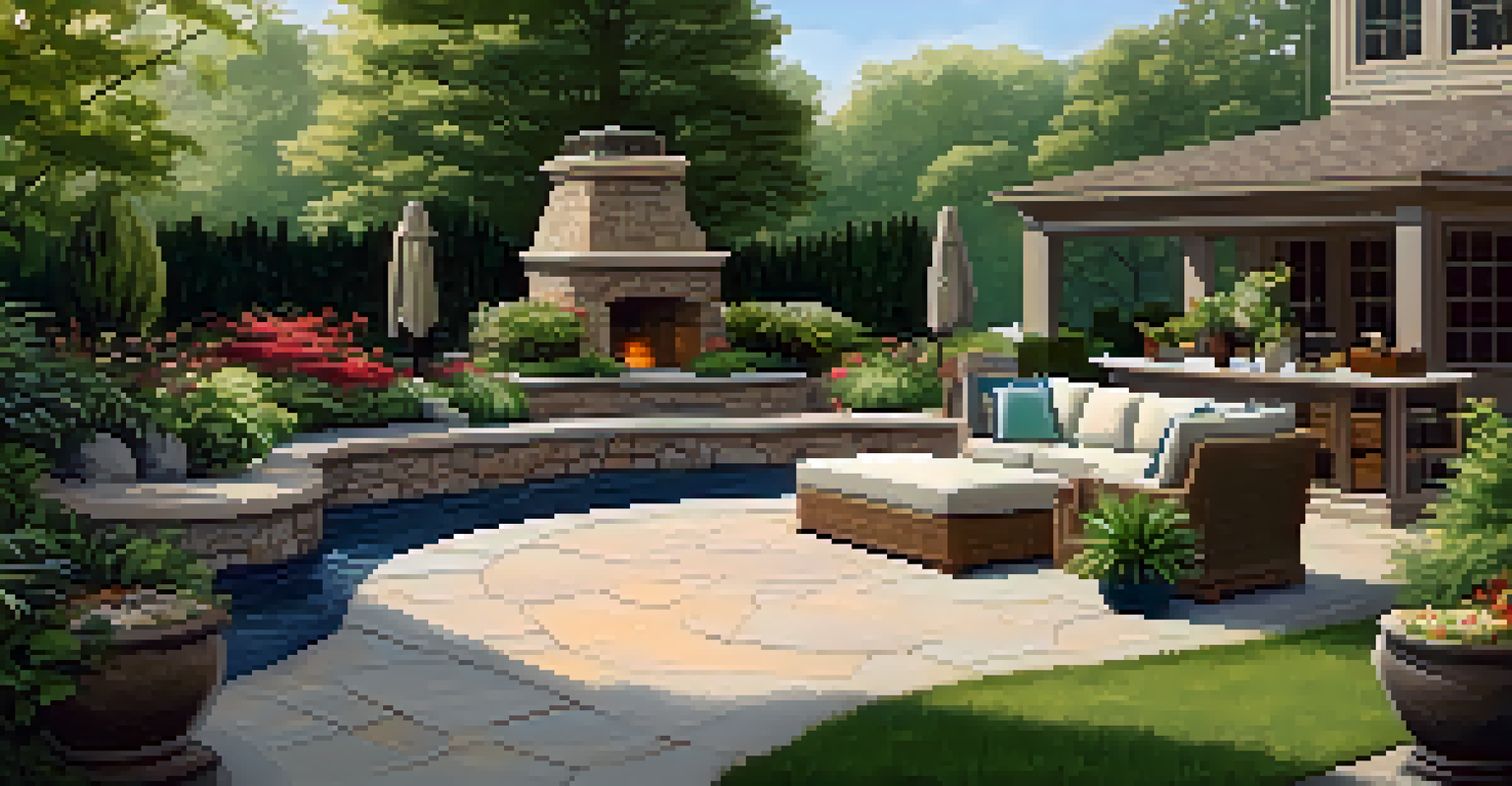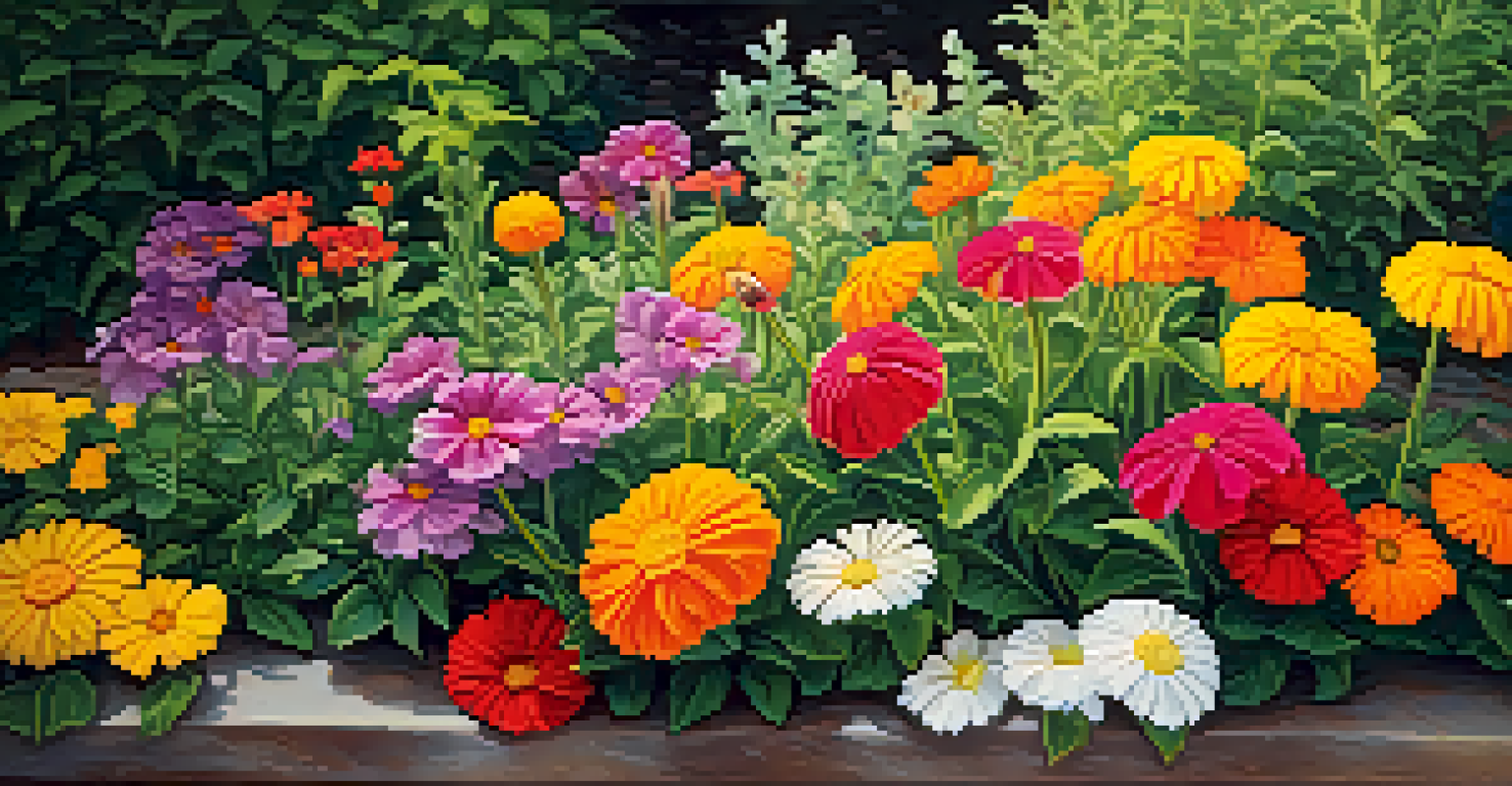The Role of Landscaping in Enhancing Curb Appeal

Understanding Curb Appeal and Its Importance
Curb appeal refers to the attractiveness of a property from the street. It plays a crucial role in creating first impressions for potential buyers and passersby. A well-maintained exterior can significantly influence how people perceive a home, often setting the stage for how they feel about the interior.
The exterior of your home is the first thing people see, and first impressions matter.
Imagine walking past a house with overgrown weeds, peeling paint, and a neglected yard. This uninviting sight can instantly evoke negative feelings, whereas a beautifully landscaped home draws admiration and curiosity. Curb appeal not only enhances aesthetic value but also contributes to the overall desirability of a neighborhood.
In real estate, properties with high curb appeal tend to sell faster and at higher prices. A little investment in landscaping can yield substantial returns, making it a wise decision for homeowners looking to enhance their property’s value.
The Key Elements of Effective Landscaping
Effective landscaping involves a variety of elements that work together to create a cohesive look. These may include trees, shrubs, flowers, and hardscaping features like pathways and patios. Each component plays a vital role in establishing a welcoming environment that invites people in.

For example, strategically placed flower beds can add vibrant splashes of color, while well-maintained shrubs can create a sense of structure and formality. Incorporating trees can provide shade and enhance privacy, further boosting the appeal. When designed thoughtfully, these elements highlight the property’s best features.
Moreover, incorporating native plants into your landscaping can ease maintenance and ensure the garden thrives with minimal effort. This approach not only beautifies your home but also promotes sustainability, making your landscape both attractive and eco-friendly.
Choosing the Right Plants for Your Landscape
Selecting the right plants is critical in achieving a stunning landscape. Consider your local climate, soil type, and sunlight exposure when choosing plants that will flourish in your yard. This thoughtful selection process ensures your garden remains vibrant throughout the seasons.
Landscaping is the art of making a house into a home.
For instance, if you live in a region with harsh winters, opting for hardy perennials can provide color and texture year after year. On the other hand, areas with mild climates might benefit from a mix of flowering shrubs that bloom at different times, creating a dynamic visual experience.
Additionally, think about the size and growth habits of plants—larger trees can provide shade, while smaller plants may be better suited for borders. By creating layers and varying heights, you can add depth to your landscaping and keep the viewer’s eye moving across the space.
Incorporating Hardscaping for Added Interest
Hardscaping refers to the non-plant elements in landscaping, such as patios, walkways, and walls. These features can enhance the functionality of your outdoor space while adding visual interest. By integrating hardscaping elements, you create defined areas for relaxation and entertainment.
For example, a stone walkway can lead guests through your garden, guiding them to a cozy seating area. Similarly, a well-placed patio can serve as an outdoor dining space, inviting family and friends to enjoy the fresh air. These elements not only beautify but also increase your home’s usability.
Moreover, hardscaping can help manage water drainage and prevent soil erosion, contributing to the long-term health of your garden. This balance of hard and soft elements creates an inviting atmosphere that complements your home’s architecture.
The Role of Color in Landscaping Design
Color plays a pivotal role in landscaping design, influencing mood and perception. By understanding color theory, you can create a landscape that evokes specific feelings—warm colors like reds and yellows can create an energetic vibe, while cool colors like blues and greens promote calmness.
Consider how the colors of your plants interact with each other and with the exterior of your home. For instance, if your house has a neutral facade, incorporating bold flower colors can provide a striking contrast that enhances curb appeal. Alternatively, a monochromatic palette can create a sophisticated and cohesive look.
Additionally, seasonal changes in plant colors can keep your landscape dynamic. By selecting plants that bloom or change color at different times of the year, you can ensure your yard remains visually appealing throughout all seasons.
Maintaining Your Landscape for Long-Term Appeal
Landscaping is an ongoing commitment that requires regular maintenance to keep it looking its best. This includes tasks like weeding, pruning, mulching, and watering. By dedicating time to these activities, you ensure that your investment in curb appeal remains intact.
Think of maintenance as a relationship with your landscape—nurturing it leads to a beautiful, thriving environment. Just as you’d regularly care for a pet or a garden, consistent attention to your landscape will yield rewarding results. Neglect can lead to overgrowth and decay, detracting from the beauty you’ve worked hard to create.
Seasonal preparations, like fall clean-up or spring planting, can also set the stage for future growth. By staying proactive with maintenance, you not only enhance curb appeal but also contribute to the overall health of your outdoor space.
Professional Landscaping Services: When to Consider Them
While many homeowners can tackle basic landscaping tasks, professional services can take your curb appeal to the next level. If you’re considering a complete overhaul or lack the time and expertise, hiring a professional can save you stress and ensure a polished result. Experts bring a wealth of knowledge and creativity to the table.
For instance, a landscape designer can develop a customized plan that considers your preferences, budget, and local environment. They can recommend the best plants and materials, ensuring everything works harmoniously together. This tailored approach can result in a landscape that significantly enhances your home’s exterior.

Additionally, professionals can help with installation and ongoing maintenance, allowing you to enjoy your outdoor space without the hassle. In the long run, their expertise can lead to a more sustainable and visually appealing landscape, making it a worthwhile investment.